 ™
™
TRADITIONAL MOUNTAINEERING
™
www.TraditionalMountaineering.org
™ and also
www.AlpineMountaineering.org
™
 ™
™
FREE BASIC TO ADVANCED ALPINE MOUNTAIN CLIMBING INSTRUCTION
™
Home
| Information
| Photos
| Calendar
| News
| Seminars
| Experiences
| Questions
| Updates
| Books
| Conditions
| Links
| Search
![]()
Yes, indeed! Traditional Mountaineering is an aerobic sport. It includes jogging, running, hiking the hills, backpacking, climbing, mountain biking, back country skiing, snowshoeing, telemark skiing and similar sports all acting together to improve aerobic capacity, strength, balance and athleticism. Long distance mountain trail running can involve several of the six classes of mountaineering: walking on the trail, walking off the trail, scrambling using hands and feet, dangerous scrambling, rock climbing and hanging from ropes as in rappelling. It all depends on what happens.
A friend of ours
in Bend is a very experienced long distance trail runner. Here is Rod Bien's report of his under 24 hour completion
of the classic Western States 100. (Have you run 100 miles in one
day? How about 26.2 miles?)
--Bob Speik
Rod Bien—Western States 100 Mile Endurance Run, 2004
Here is my report for running Western States 2004. I am
writing this mostly because I received so much help by reading the other
race reports on Stan Jensen’s website,
run100s.com. However, I did note that none of the other posts had anyone
breaking the 24 hour mark. So, I thought if I broke the 24 hour barrier, I
would write a report for
others who are interested in trying to break into “silver buckle land”. So
much for the drama in this report, eh? This was my second Western States
100. I ran my first one
hundred miler (WS) in 2002 in 26:05. Since then, I have also run the very
difficult Angeles Crest 100 in 2003.
I went into training both mentally and physically having the 100% goal of
breaking 24 hours at Western. I had already completed the course and now
looked to better my
time. For those who are reading this wanting to break 24, the most important
advice I can give you for breaking 24 is believing that you can break 24 (if
this is within your
ability) and not being afraid to actually say to others that this is your
goal. I found it very interesting as I read the other posts, that at least
half of the posts expressed the
desire to break 24 hours, if it happened. In every one of these write ups,
the person did not make it. I think a big part of this is that of course you
are going to hit some
extreme lows in a 100 miler and if you don’t have the overwhelming desire to
break 24, you will succumb to your bodies’ complaints, slow down, and
eventually fall off track
in the race. This is exactly what happened to me in 2002 and why a friend
who I was running with, Jeff Browning, broke 24. He really wanted it and I
wanted it, “if it
happened”.
The second most important advice that I can give is to get on the course.
Knowledge of the course is such an enormous advantage. If you live anywhere
near the course,
get on it constantly and learn your splits on different sections. If you
cannot (like me, I live in Bend, Oregon), the training camp is the most
important 3 days of training you
will have. Barring a divorce, make it there :). Also, don’t just run the
training runs blindly. Write down your splits, landmarks, etc. These are the
things that will help you
on race day. Lastly, have a plan and try and stick to it. This is something
I need to get better at. Literally every person I saw (who I knew had broken
24), I would ask what
their strategy is/was. However, there is no magic formula. You have to learn
to run to your strengths, keep to your game plan, and stay mentally strong.
Anyway, I really
thought those were the keys to me for this race. My basic strategy was to go
out at a good, slightly aggressive pace while it was cool. Try and build a
one hour cushion by
Robinson Flat. Once I hit this point, I wanted to just “keep par” and
protect my cushion during the heat of the day. Once I hit Foresthill, I
hoped to pick it up a bit after the
sun was less intense, and hopefully put another hour in the bank heading to
the river. I then hoped to coast on in at about 22 hours. Well, some of this
worked and some
didn’t.
I headed down to the race on Thursday the 24th with my pacer, Jeff Borne and
another good friend who was pacing someone else, Sean Meissner. We got down
there and
Sean met his runner Ashley (they were camping) and Jeff and I stayed at
Squaw Valley Resort. I thought this was another big benefit. I have great
respect for those who
can camp and then run a great 100. However, for me, no way. I figure I have
invested so much money ( shoes, supplies, time off work, etc) and the months
and months of
working my butt off to save a couple hundred bucks on a hotel room. I like
being able to chill out at night, watch TV., relax, etc. I know I have
enough work ahead of me in
the race. I want my accommodations to be easy. I know I just would not be
able to relax as well.
For the next day and a half (it felt like a month), we burned time waiting
for the race. Lots of eating, walking around, checking drop bags, checking
them again(!), etc.
Finally after all the meetings and hoopla, Saturday morning came and I was
pumped!! I had waited so long for the race, I couldn’t believe it was
actually starting. The gun
went off at 5 a.m. and we started the first 2,500 foot climb up to
Escarpment. As much as I wanted to just tear it up, I walked basically the
entire thing. I chuckled to myself
watching some people running, breathing super hard, after about 3 minutes
and they weren’t running much faster than I was power walking. I had told
myself not to breathe
heavy at all going into Robinson Flat. I felt great, scenery was amazing,
killer sunrise. Running in the mountains is the best. Had some good
conversations and just settled
on into the day.
I met up with Dan Montoya, also from Bend, OR, who was on safety patrol from
the start to Foresthill! What a great training run. Dan is running Angeles
Crest later in the
summer. I’m sorry, Dan.... We stuck together until Red Star Ridge at which
point I left him at the aid station. Running was going great. The first 25
miles were a bit more
technical than I had remembered. When I do the race again, I will try and
get down and run that portion of the run before the race. However, no
complaints, running the flats
and down, hiking the ups. I decided to listen to my body about food and
drink. I started by taking two Endurolytes an hour and I took one GU early
on in the race. It turns
out, I would have only one GU the entire race. They always mess with my
stomach once I have too many and after a while I always have to “psyche”
myself up just to have
one. So, screw it, I was going old school, no GU’s. Not sure if this helped
or hurt. I also sweat about as little as anyone I know. I have pretty dry
skin and salt is always a
weird game for me. I always feel like I am taking too much even though
everyone around me takes way more. So, I tried to keep on my 2 pills per
hour and to try and eat
salty foods at the table. Getting sick really messed with me in my 1st
Western States and I hoped to keep my stomach square in this race.
Finally, after a few miles of dirt roads, I met up with friend Ric Hatch and
we ran together for several miles and commented on how the initial “buzz” of
the race had worn off
and it was now work time. We ran into Robinson Flat (24.6 miles) together
where I was to meet my pacer for the first time. It was great seeing a few
friends, Jeff scolded
me for running too fast, gave me a turkey sandwich and gave me my waist belt
and my MP3. I train with an MP3 on all my alone runs and love it. I was very
excited to get it
and looked forward to using it until mile 62. Jeff then told me he would be
at the next aid station, 4 miles away, and that I needed to slow down. Well,
I did slow down but it
had nothing to do with him (sorry, Jeff). I hated running with my MP3. I was
in a huge pack of people, I was worried people were asking to pass me, I
couldn’t get my
breathing etc. I was really surprised. The belt also was messing with my
stomach a bit. The whole thing sucked. So, when I saw him at the next aid
station, I gave him
the belt and MP3 and went back to basics. 2 bottles and some pills and
supplies in my Race Ready shorts.
The next ten miles are not my favorite. They are mostly dirt roads that
weave up and down. It is also beginning to get very hot and this part of the
course is very exposed.
There isn’t great scenery to fixate on and basically this where you just
have to focus and get from aid station to aid station. My main concern was
keeping my one hour
cushion that I had achieved at Robinson Flat. Sometimes I would lose a few
minutes, sometimes I would gain a few but the first thing I always looked at
each aid station
was the 24 hour sign and how I was doing compared to it. So far so good.
The wheels began to get a little bit wobblier at about Dusty Corners (Mile
38). I was hot, food did not look good at all and I wasn’t really taking
much salt. I kept taking in
water but that was about it. The stomach was getting queasy (my Achilles
heel) and I knew it was going to be a long day. However, nothing to do but
keep going. I told
myself I was not going to sit at an aid station until Foresthill (wishful
thinking). I hit Last Chance (mile 43.3), still didn’t feel great and knew
that I had the canyons coming.
Ran into an old friend I had not seen since college (Galina Barford)
volunteering medical help which tripped me out a bit but not much time for
chit chat and off I headed down
towards the canyons. I perked up a little running down hill and started
feeling strong running down the steep hills. The nausea seemed to fade and
it was good times again!
Passing people, legs feeling strong, no worries. I hit the bottom of the
canyon crossed the bridge and was actually very excited to start the long
haul up one of the cruxes of
the course, Devil’s Thumb, which is a 1,600 foot climb. I was very confident
in that I had trained very hard on both ups and downs before the race. So,
here we go! And
then, nothing. I felt like I had weights on my legs. Some really perky guy
running his first WS told me how much he loved hills, etc. I just needed him
to be quiet. I was
bummed because usually I love climbing up and I like to be the one showing
off but he was just kicking my butt and I felt like crap. The climb seemed
to go forever and
when I hit the top of Devil’s Thumb, I thought I was in “Deep Kim Chee” as
my dad used to say. The guys at the aid station asked how I was doing and I
think I said, “not
good”. They sat me down (so much for no sitting) and I started nursing a
coke. I then ate a cup of chicken noodle soup which really helped me out
later and I think maybe I
tried a Pay Day Bar. I stayed there for a while. Finally they kicked me out
and said that I would get it together on the long, long descent down to El
Dorado Creek. They
were right. I perked right up and felt great again. Chicken noodle soup
kicked in and I was on the Good Times Express. Passing people again, legs
felt strong, and life was
good. I hit the creek and saw a acquaintance of mine, Aaron Summerhays
looking pretty thrashed and talking a little gibberish. I felt bad for him
because he had a great
race last year and I think redlined it a bit this year. He later dropped at
Michigan Bluff. So, I ate a piece of pay day bar and headed up the next
1,800 foot climb to Michigan
Bluff.
I was confident that I would feel much better on this climb up as my stomach
seemed to be coming around and I had gained a little more time. I told
myself not to pressure
myself and just have a good hike. Well, it hit the fan again. Lead legs were
back. I was hating. It is a long climb and it just killed me. About half way
up I started feeling
really sick. I thought maybe I was going to puke. Then I did, twice. Big
pukes too. And, they didn’t make me feel much better. This was probably my
low point of the race
or close to it. I knew I was only slightly over half way and the remaining
47 miles were going to be long now that the puking had begun. Bummer. I hit
Michigan and my
pacer was there asking how I felt. I couldn’t really lie though I might have
tried....?... Anyway, he walked me over to the scale and said that we were
going to take some
time out, eat, regroup, and get me back out there. Stepped on the scale,
140. I was down 8 pounds. Shit. They told me I had to go into the “recovery”
area to eat and
drink and to get my weight up. I was really bummed but I felt bad enough
that I thought it might help. I sat down with the other thrashed
participants, ate some soup, drank
some coke and then wanted to go. I had already been there for at least 10
minutes and my cushion for 24 hours was probably now at about 50 minutes. I
knew I was
supposed to weigh in again but I didn’t want to because I was worried they
would just make me stay longer so I just took off. I walked up the road
about 3 minutes to the
“exit station” and said “92 out!” They said they had received a radio that I
need to be reweighed. So, I lied and told them that I already had.
Unfortunately, he radioed back
over and said that I had not and I had to go back. I pleaded but they would
not let me go. So, frustrated, I walked back, worried they were going to
make me stay for
another half hour or something. They wanted me to get on the same scale I
had done before. I refused and said I wanted to use the other one. I hopped
on. 148! You’ve
got to be kidding me! I was so bummed. The other scale was wrong and I had
burned A LOT of time. My friend Sean slightly spazzed at the aid station
personnel but it is
hard to get upset when people are just trying to keep you safe and they are
volunteering. But, I got caught up in the moment and was upset too. I said a
smart ass remark
which I very much regret now and headed out. It was a horrible stop. I had
lost my confidence because I really thought I was in trouble when I wasn’t
really. But, I just had
to regain focus and start running and making up time. I think this was the
smallest that my cushion ever was.
But, once again, the downhill’s saved me. While I saw others cramping up in
volcano, I felt great. I hit the down hills hard as my legs felt great. The
pattern continued of
good feelings on the down hills and nausea on the uphill. I walked the long
asphalt uphill towards Foresthill. I walked a couple little sections of it
but I’m sure it looked quite
pathetic. I cruised into Foresthill and felt average at best. I did not want
to spend too much time here as I had already been burning too much time at
aid stations. I
picked up my pacer and we started down the road. Jeff immediately asked me
how long it had been since I had taken salt. I said it had been a few hours.
He told me to
pop one. So I put one into my mouth and then puked everything I had refueled
with at Michigan Bluff and Foresthill. I puked one more time. I was worried
he was going to
be stressed about these circumstances so I said, “don’t freak out. I’m
fine.” He has fine with it and we just got on our way. He commented on how
well my turnover was on
my legs and that pumped me up and get me motivated.
My plan was to pick up some time going to the river crossing. That didn’t
really happen but I did stay steady and instead really just kept trying to
protect my 24 hour
cushion. I think going to the river, the lowest I got was about a 45 minute
cushion and I think it got about as big as about an hour and five minutes.
All in all, this section
went really well. Of course there were some lows and highs but we just
chipped away at it and before we knew it, we were seeing the lights that
surround the river. The river
scene was great. Lots of people who were buzzing with the anticipation of
breaking 24 hours. I kept bumping into old friend and very good runner,
Topher Gaylord from Italy.
He has run Western very fast but was having a bit of a tough day. I kept
asking him, “are you sure we have 24 in the bag?” and he was kind but
continually telling me we
were golden, it was just weather we wanted 22 or not. River crossing was
great and as fun and exhilarating as I had remembered. I decided no shoe
change this year as I
knew it was really easy to burn time on the other side wiping off legs,
putting, on socks, etc. Its easy to make a 10 minute stop there so we just
crossed and headed up to
Green Gate. Nausea was back again and I puked a few times during this
section. But, the hill is actually pretty easy and since I wasn’t hiking it
too hard, it went by quick
and we got to the part of the course that I despise the most.
The next ten miles always kill me. Weather it is on a training run or during
the race. You are just weaving in and out of those darn canyons. They are
not particularly hilly
at all but my motivation is pretty low so I end up walking a lot of the
little ups. It is also tough because it is dark so you can’t really tell how
long the ups and downs are. My concentration here was just to stay steady
and put one foot in front of the other and run. It was great having my pacer
Jeff here because he would let me know how far he thought we had left and
didn’t let me get into a funk when I saw all the lights in front of us. This
is still a section I would like to get stronger on. My motivation is just
hard to keep up here. When we hit Brown’s Bar (89.9), I felt really dumpy. I
had just puked and I just felt generally tired which I hadn’t really felt in
my other 100’s. I spent too long at the aid station here and then headed
out.
By the time we hit HWY 49, I was definitely smelling the barn. We did not
really spend any time at the aid station and from here to the end, I would
guess we passed about 10-12 people and only got passed by one. I was really
motivated here and all my sickness seemed to disappear. We were running the
moderate hills and hiking hard up the big ones. It was a little hillier in
this area than I had remembered.
Hitting “No Hand’s Bridge” was definitely a highlight for me. Two years ago,
I arrived here in the new daylight. This time, as we ran down the hill, we
could see all the
Christmas lights lining the bridge and a huge television screen suspended
above the bridge. It was awesome and it felt great to be there in the middle
of the night. My pacer Jeff wanted to fill up water bottles but I wanted
none of it. I kept going across the bridge hooting and hollering knowing
that I could walk to the finish and break the 24 hour mark. We really
hammered this section. Caught quite a few people and felt great. We ran the
majority of the hills at the end. The hill to Auburn was longer than I
remembered but I didn’t care, we were done. As we approached the road, there
was a runway landing of glow sticks which were cool to see. We walked the
first hill on the
asphalt and ran in from there. I knew I was right on the brink of breaking
23 hours but wasn’t really concerned. It felt good to enjoy the moment. Who
knows how many of
these any of us will have?? We hit the stadium, did the loop and were done.
23:00:46. Done.
What a great race. I’m applying next year and already thinking of ways to
shave that time down to break 22:00.
--Cheers, Rod Bien
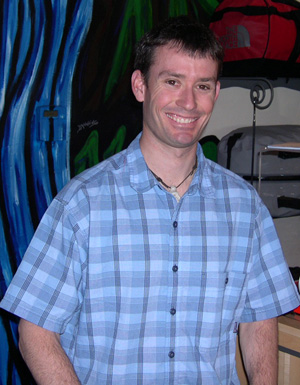
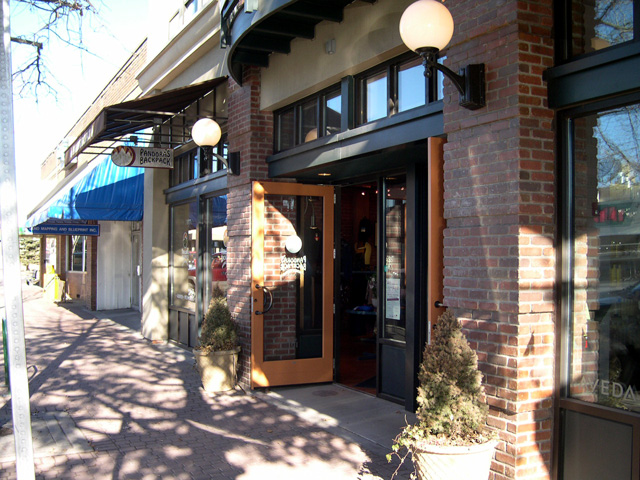
###########
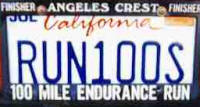
For more information on the
Western States 100 mile race go to Stan Jensen's Run100s Website
.
Note: Here are my old personal vanity plates from the 1980s How about that? Webmeister Speik
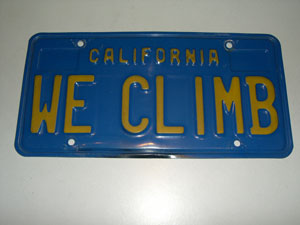
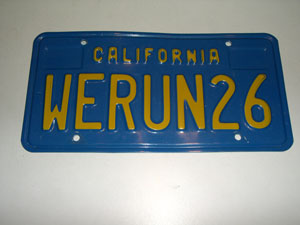
![]()
Read more . . .
Pandoras Backpack
Patagonia by Pandoras
Backpack
CARBORATION AND HYDRATION
Is running the Western States 100 part of "traditional mountaineering"?
What's wrong with GORP?
Answers to the quiz!
Why do I need to count carbohydrate calories?
What should I know about having a big freeze-dried dinner?
What about carbo-ration and fluid replacement during traditional alpine climbing?
4 pages in pdf
![]()
What should I eat before a day of alpine climbing?
ABOUT ALPINE MOUNTAINEERING
The Sport of Alpine Mountaineering
Climbing Together
Following the Leader
The Mountaineers' Rope
Basic Responsibilities
![]() Cuatro Responsabiliades Basicas de Quienes Salen al Campo
Cuatro Responsabiliades Basicas de Quienes Salen al Campo
The Ten Essentials
![]() Los Diez Sistemas Esenciales
Los Diez Sistemas Esenciales
Our Mission
ALPINE CLIMBING ON SNOW AND ICE
Winter mountaineering hazards - streams and lakes
Is long distance backpacking part of "traditional mountaineering"?
How long is the traditional alpine mountaineering ice axe?
What about climbing Mt. Hood?
What is a good personal description of the south side route on Mount Hood?
What should I know about travel over hard snow and ice?
How can I learn to self belay and ice axe arrest?
6 pdf pages
![]()
What should I know about snow caves?
What should I know about climbing Aconcagua?
TECHNICAL MOUNTAINEERING
What is the best traditional alpine mountaineering summit pack?
What is the best belay | rappel | autoblock device for traditional alpine mountaineering?
What gear do you normally rack on your traditional alpine mountaineering harness?
Photos?
![]()
What is the best traditional alpine mountaineering seat harness?
Photos?
Can I use a Sharpie Pen for Marking the Middle of the Climbing Rope?
What are the highest peaks in Oregon?
Alphabetically?